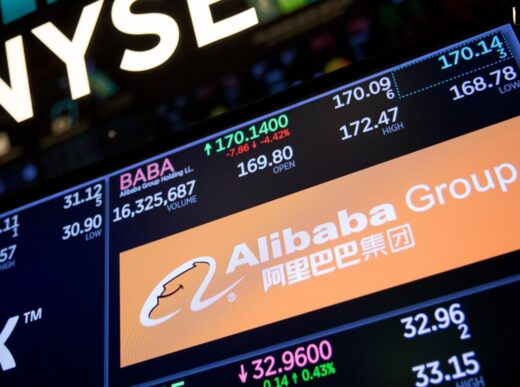The stock market functions as a forward-looking instrument, often anticipating future shifts before they materialize. Yet, the enigma persists—economists find themselves grappling with the challenge of forecasting these forthcoming shifts.
In the current landscape, two juxtaposing narratives shape the economic trajectory. The unprecedented surge in inflation has compelled consumers to increase their spending, resulting in a remarkable 75% drop in excess savings in the U.S. since August 2021, as reported by the San Francisco Federal Reserve. This inflationary surge propelled the Federal Reserve to embark on an unanticipated spree of interest rate hikes, triggering a domino effect that manifested as substantial bank failures and looming complexities in the commercial real estate market, among other repercussions.
In parallel, retail sales in the U.S. surged by 0.7% in July, as reported by the U.S. Census Bureau, maintaining a consistent streak of robust sales figures surpassing expectations. Furthermore, the unemployment rate stands at an impressive 3.5%, historically signaling a robust job market.
The conflicting data poses a conundrum—while some indicators suggest an impending recession, implying a potential decline in the stock market, others signal economic strength that could potentially buoy stock values. Amid this puzzling scenario, Wall Street looks to the retail titan Walmart (WMT 1.32%) for insights, aiming to decode the market’s future course. What lessons can we glean from Walmart?

Walmart’s Echo: A Glimpse into the Economic Fabric
On August 17, during a conference call delving into the fiscal second-quarter financial results of 2024, Walmart’s CEO, Doug McMillon, acknowledged the intricacies of the economic landscape, stating, “There are a lot of conflicting data points, but you guys see the same data that we do.”
Walmart’s current position appears favorable, even as the broader economic panorama remains complex. The second quarter witnessed a 5.7% year-over-year surge in revenue, nearly reaching $162 billion. This growth was buoyed by robust same-store sales expansion of 6.4% in the U.S.
However, a nuanced analysis of Walmart’s sales growth yields noteworthy insights. While segments such as grocery and pharmacy experienced growth in Q2, general merchandise sales witnessed a decline. This contrast may harbor significant implications. The shift indicates that consumers are prioritizing essential expenditures while scaling back on discretionary purchases.
This pattern resonates across the retail landscape. Comparable trends were observed in the financial results of other retailers. For instance, Target (TGT 1.34%) witnessed an overall decline in same-store sales during its recent quarter. However, growth was observed in its essentials category, whereas segments like home and apparel faced a decline.
Similarly, Dollar General (DG 1.69%) reported a 4.3% growth in same-store sales within its consumables category during the fiscal first quarter of 2024. In contrast, non-consumables witnessed an 8.5% drop. As aptly pointed out by CEO Jeff Owen, “Customers continue to shift more of their spending away from discretionary goods.”
As the focus gravitates towards essential purchases, Target and Dollar General revised their financial forecasts for the remainder of the year, steering towards a more conservative outlook. The optimism that characterized the outset of 2023 has given way to a more cautious stance. Interestingly, Walmart has emerged as an outlier, raising its full-year guidance.
Walmart’s Strategic Edge: The Product Assortment Factor
The variance between Walmart and its retail counterparts could be attributed to the array of products offered in stores. While Walmart, Target, and Dollar General all feature food items, Walmart boasts a larger grocery selection. Consequently, it evades the same vulnerabilities that consumer spending fluctuations expose.
Cracking the Market Code: Insights for Investors
This tableau of information opens the door to speculation: Consumer discretionary stocks might encounter lackluster figures in the next year. Consequently, these stocks could face significant sell-offs in response to the subpar numbers. While not all stocks would be ripe for investment, the scenario could pave the way for high-quality businesses to witness a downturn, followed by a resurgence in share prices as the economy navigates through the tumultuous cycle. The present juncture might just be the optimal moment to begin curating a watch list.
Nevertheless, a more profound realization emerges for investors. The vantage point provided by Walmart’s financial performance lends credence to the notion that the economy stands in a stable equilibrium—neither exceptionally robust nor starkly bleak. This equilibrium holds a surprising narrative.
In December, a staggering 70% of economists polled by Bloomberg predicted a U.S. economic recession in 2023. Astonishingly, within a mere seven months, this figure dwindled, with less than half of the economists foreseeing a recession within the coming year.
The swift shift in expert opinions underlines a crucial reality: The task of economic prediction is a complex endeavor, often marred by volatility. This reality underscores the importance of adopting a long-term perspective, beyond the immediate ebb and flow. While anticipating the intricate details for the near and distant future remains daunting, deciphering enduring trends and identifying companies thriving within those realms provides a steadfast strategy. The economy’s rhythmic fluctuations and the market’s tendency to overreact underscore the value of maintaining stock holdings through market cycles, yielding substantial gains for patient investors.















